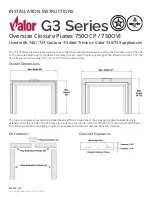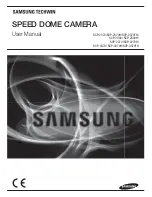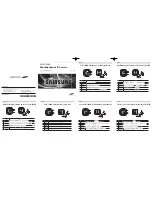
Correction occurs only
when you press the
shutter release button,
p rov i d i n g a g re a t e r
corrective effect.
Mode 1
Mode 2
Mode 3
Image is continually
corrected, so you can
see the image clearly
on the Live View fi nder
or the LCD.
Continually corrects
for up/down camera
movement; ideal for
panning action shots.
For the lenses distortion compensation available, the horizontal axis of MTF is the distance from the center,
which is compensated accordingly.
For the lenses distortion compensation available, the horizontal axis of MTF is the distance from the center,
which is compensated accordingly.
•Four Thirds™ and Four Thirds Logo marks are trademarks or registered trademarks of Olympus Imaging Corporation, in Japan, the United States, the European Union and other countries.
NEW QUALITY
Micro Four Thirds: Exquisite Beauty in a Smaller Package
The open standard that led to the
mirror-less body
Four Thirds adaptability – Multiplying
photographic possibilities
The G1 can be fit with a mount adaptor
DMW-MA1 (optional) that allows the use
of a wide variety of high-performance
Four Thirds lenses, including Leica D
lenses. Naturally, the shooting functions
of the G1 remain usable with the DMW-
MA1 mounted.* Unleash your creative
possibilities, for example, by using a
single focus lens to capture images with
a beautiful, softly focused background,
and an ultra-powerful zoom to pull distant wildlife right up close.
*Lenses other than LUMIX G lenses cannot use the AF Tracking, AFc (Auto Focus Continuous) or Continuous AF
functions. Also, when a lens that does not support the Contrast AF function is mounted, operation will automatically
switch to manual focus. Confi rm the operation information of compatible lenses at Customer support http://panasonic.
jp/support/global/cs/dsc (English).
The G1 adopts the Micro Four Thirds System standard, developed
as an extended version of the Four Thirds System standard for
digital camera systems. By adopting this standard and developing
a camera body that eliminates the mirror box and optical
viewfinder unit, Panasonic was able to shorten the flange-back
distance* by about half (compared with a conventional Four Thirds
camera) and reduce the lens mount diameter by about 6 mm.
The result is a digital interchangeable lens camera that is simply
revolutionary in terms of usability and mobility. Small enough for
you to take anywhere yet sophisticated enough to take you as far
into photography as you want to go.
Mirror-Less Structure
(DMC-G1)
Mirror Structure
(DMC-L10)
Focusing Glass
Image
Sensor
Main Mirror
AE Sensor
Live View Finder
Sub Mirror
Penta Mirror
Image
Sensor
LUMIX G lenses: Superior portability,
superior rendering
The newly developed LUMIX G lenses comply with the Micro Four
Thirds System standard for interchangeable lenses. Characterized
by their compact size and lightweight, both lenses bring out the full
capabilities of the 4/3-type image sensor, and support the contrast
AF function of the G1 and its long list of convenient functions.
Both lenses also feature Panasonic's MEGA O.I.S. (optical image
stabilizer), which makes it easy to shoot super clear shots even in
low-light situations by suppressing the blur caused by hand-shake.
MEGA O.I.S. – Panasonic's advanced
hand-shake correction technology
The LUMIX G lenses incorporate Panasonic's MEGA
O.I.S., the advanced optical image stabilization
system that has highly proven in LUMIX digital
cameras. In the LUMIX G lenses, efficient
stabilization elaborated by a special integrated LSI
that processes output from the gyrosensors, which
operate 4,000 times per second.
Three image stabilization modes to suit different needs
LUMIX G VARIO 14-45mm/F3.5 - 5.6 ASPH./
MEGA O.I.S.
From casual snapshots to personal
portraits to sweeping landscapes, this
versatile zoom lens provides beautiful
results in a wide range of shooting
situations. It covers the standard focal
range of 28 to 90 mm (35 mm equivalent).
The aspheric lens element also improves optical performance by
minimizing distortion, even at the 28 mm wide end.
LUMIX G VARIO 45-200mm/F4.0 - 5.6/
MEGA O.I.S.
Covering from 90 to 400 mm (35 mm
equivalent), this telephoto zoom lens
lets you capture crisp, blur-free shots
w h e n s h o o t i n g s p o r t s e v e n t s a n d
other distant subjects while achieving
minimum aberration at all focal length,
high-contrast representation and high color reproduction by
implementing 3 ED (extra-low-dispersion) lens elements.
Venus Engine HD – Next-generation
digital signal processing
Two CPUs give the Venus Engine
H D e x c e p t i o n a l ly a d v a n c e d
processing capabilities. This
s o p h i s t i c a t e d L S I f e a t u re s
effective noise reduction even at
high ISO sensitivity levels. The
Venus Engine HD also reproduces
delicate color nuances faithfully
with independent gradation control for each of the R, G and B
colors. Additionally, it supports the Live View function, resulting
in the display of smooth images at 60 fps. HDMI output support is
also a feature of the Venus Engine HD.
Dust reduction system protects the image sensor
I f d u s t o r o t h e r
f o r e i g n m a t t e r
g e t s i n s i d e t h e
camera when you're
changing lenses, it
could cling to the
image sensor and
show up as a spot
in photos. The G1
helps eliminate this possibility by placing a Supersonic Wave Filter
in front of the Live MOS sensor. Vibrating around 50,000 times
per second, the fi lter repels dust and other particles. This keeps
the image sensor clean at all times and eliminates the need for
cumbersome maintenance procedures.
12.1-megapixel Live MOS sensor:
Higher image quality, lower power consumption
The 4/3-type 12.1-megapixel Live
MOS sensor featured in the G1
offers the best of both worlds –
the superior image quality of a
CCD sensor, and the lower power
consumption of a CMOS sensor.
N ew t e c h n o lo g y t h a t m a ke s
it possible to read 4 channels
of data simultaneously also helps the G1 deliver 60 frame-per-
second Full-time Live View images, while faithfully reproducing
high-resolution images with fi ne detail and rich gradation.
LCD
LCD
JA
PA
N V
er
si
on
. P
AG
E. C
ov
er 2
00
9.
05
.21 N
on A
ss
oc
ia
te
s
LVF
AF Sensor
Flange Back Approx. 40mm
Flange Back Approx. 20mm
08
09
(1,1)
(1,1)


























